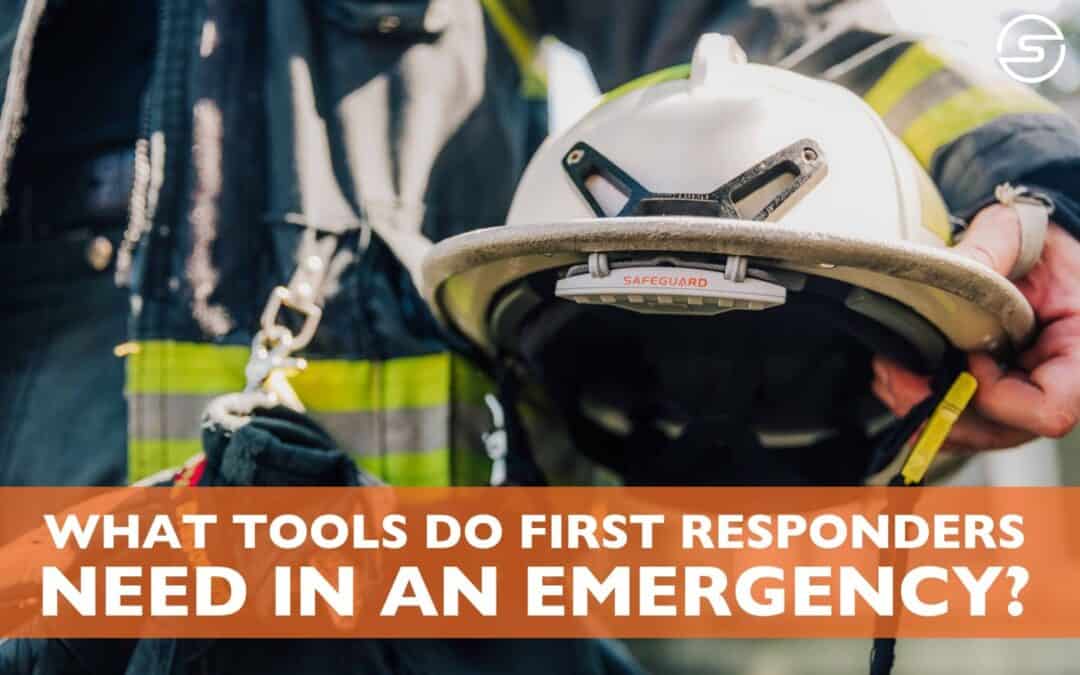What Tools Do First Responders Need in an Emergency?
Like many other professionals, first responders rely on tool kits to respond rapidly to emergencies. The tools in these kits are specialized for the particular tasks and challenges these workers face.
The term “first responders” may include different types of professionals, depending upon the situation, including policemen and EMT’s. For many emergencies, however, first responders will refer to firefighters, who are often trained in a wide range of skills to respond to various types of emergencies – not just fires, but earthquakes, floods, accidents, and other disasters.
So what do these first responders need to have on hand when they enter a disaster site? Let’s look at some of the tools that might be most useful in an emergency.
Tactical Trauma Kit
A tactical trauma kit is an essential item carried into any disaster by at least one team member. Unlike a regular doctor’s bag, these kits are put together specifically to address traumatic injuries:
- Bandages, tape, and injury sealants for open wounds
- Tourniquets
- Stabilization devices for orthopedic injuries
- Airway preservation devices like intubation and suction equipment
- Wound disinfectant
- Diagnostic tools like stethoscopes, oximeters, and blood pressure monitors
The kit will also contain medical PPE, including gloves and masks.
Voltage Detector
Often, disasters can create situations in which first responders are exposed to energized wires and equipment. On top of all their other responsibilities and in chaotic situations, having to worry about an unseen danger that could lead to severe shock or death from electrocution is not one that first responders want to face. Unfortunately, this happens more than you might expect. When power lines are down or energized equipment may be in the vicinity, the right voltage and current detector can alert the wearer to the presence and location of live lines or equipment so that they can steer clear of the threat.
Flashlight
When disaster strikes, one of the first responses is to shut down power if the power is not knocked out from the disaster already. For disasters that happen at night or in a facility that has no emergency lighting, a first responder will not be able to see what is going on when entering a disaster area without a good flashlight. Light is essential for carrying out search and rescue operations or just to see where they are going, where help is needed, and what is happening. Flashlights also help first responders to identify and locate one another in a chaotic situation.
Hammers and Axes
When undertaking search and rescue operations or accessing areas that may be cut off by locked doors or from collapsed walls, hammers and axes are essential. Hammers and axes can help first responders free people trapped inside cars, under rubble, behind walls, or inside buildings. These tools can also be used to create ventilation to rid an area of smoke or gasses. Often, these tools also have pry bars, which can open doors or move heavy objects out of the way.
Cable and Bolt Cutters
When disasters happen, parts of buildings can come down. Structural elements can contain rebar, cables, and other items that inhibit passage or escape. Chain link or iron fences and padlocks can also inhibit movement. Cable and bolt cutters eliminate these barriers, giving first responders quick and easy access to wherever they need to go.
Knife and/or Multitool
Nothing else will work when you need a knife, pliers, or other small tools. Multitools are easy to carry in a bag or pocket and lightweight. These are handy for first responders and anyone else who may encounter an unexpected problem that requires the right tool.
Rope
Whether lowering yourself down from an upper-story window or hoisting people or equipment up or down, a rope is often extremely useful in emergencies. A rope can be tied off to lower someone into an area that is inaccessible by any other method and even be used as a safety trail, helping someone find their way out of an area that is dark or confusing.
Carry Straps
With all the equipment that first responders carry, one thing they almost always have is a carry strap for their equipment that allows them to operate hands-free.
Radio
Being able to communicate with team members is critical for first responders. Although they do not work alone, team members frequently separate in carrying out their responsibilities. Radios keep the crews interconnected for their safety and the safety and welfare of the people they are helping. Good radios enable them to summon the necessary medical help and equipment they need on-site promptly and efficiently, allowing them to perform their functions at a high level.
Different types of emergencies often call for different types of equipment. Even more, different first responders often carry different tools, depending upon their role, but also depending on their personal experiences.
Safeguard Equipment® designs and manufactures hands-free personal voltage and current detectors used by various professionals, including firefighters. Our products can save lives when first responders find themselves in sketchy situations. For more information about our products and how first responders use them in natural disasters and other emergencies, contact Safeguard Equipment.
Views: 54

